Top 10 Rare U.S. Coins
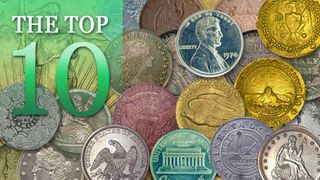
1933 Saint-Gaudens Double Eagle
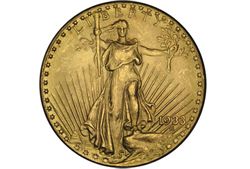
In 1933, with the Depression in full swing, President Roosevelt took the country off the gold standard and recalled all gold coins for melting. About a dozen never made it back to the mint or were smuggled out again by enterprising employees, including this one, which resurfaced in 1992 and was confiscated by the Secret Service. In 1933 it had a face value of $20; in 2002, it was sold at auction for over 7 million dollars.
1804 Draped Bust Dollar

When the Jackson administration, in 1834, wanted to dole out coin sets to foreign dignitaries, there was a problem - silver dollars hadn't been pressed for thirty years, to combat a rash of counterfeit schemes. The mint was ordered to press eight silver dollars for the occasion and they were dated 1804, the only dollar coins that would ever bear that year. Today, each has a value of over one million dollars.
The Brasher Doubloon
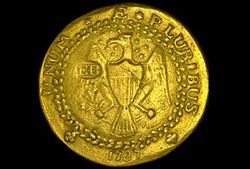
Before New York adopted the new constitution in 1789 it, like other states, had the right to issue its own state coinage. Goldsmith Ephraim Brasher got one of those contracts, to mint copper coins, but it appears he largely ignored that material and went on to produce several very artistic gold specimens for reasons unknown. Just seven of these unique coins are known to exist.
1861 Confederate States Half-Dollar
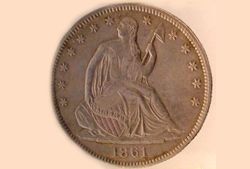
The New Orleans Mint came under the control of the Confederate States in 1861, but without a reserve of precious metals, the South chose paper money instead of coinage to support their war efforts. The few Confederate cents and half-dollars that were struck were virtually unknown until they began popping up in private collections after the Civil War.
1974 Aluminum Penny
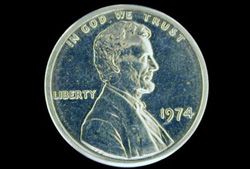
With the rising price of copper, in the early 1970s it almost cost as much to make a cent as the penny was worth. The US Mint tested alternatives, like this aluminum penny that was sent out to VIPs as a sample, and then never recouped.
1913 Liberty Head Nickel
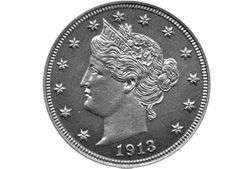
This five-cent piece is a numismatic legend. Despite being retired in 1912, five nickels with the "Liberty Head" design were struck in 1913 and came into the possession of one man. The collector started a rumor about their existence, driving up the value of the nickel if one was ever found but neglecting to mention he had all five. They were sold a few years later and, in a recent change of hands, one was valued at 3 million dollars.
Almost anything from 1870
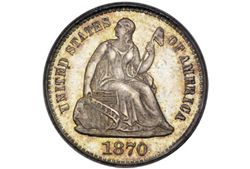
...or more specifically, from 1870 and created in San Francisco. Three of the most coveted collector coins - the 1870-S Half-Dime, 1870-S Silver Dollar and 1870-S Gold $3 coin (the S stands for the mint city) - come from the year when construction began on a new mint in San Fran. Just a few coins in those denominations were produced that year, most of which were destined to be embedded in the foundation's cornerstone.
1866
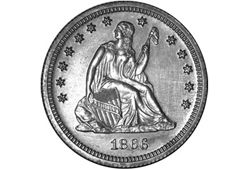
This famous silver coin, owned by the DuPont family, was the target of a heist in 1967 and only recovered just a few years ago. Just a few denominations, and probably only the one duPont dollar, were produced without the classic "In God We Trust" motto in 1866. According to some sources, it was upon special request from a collector and friend of mint executives, a pharmacist who provided opium to the workers in return.
1776 Silver Continental Dollar
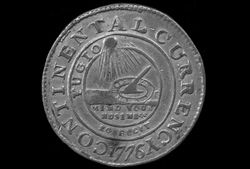
Not long after the signing of the Declaration of Independence, the new United States Congress decided to assert its freedom by striking the first true American currency. The design, usually attributed to Benjamin Franklin, is a whimsical motif including the words "fugio" (time flies) and "mind your business," along with thirteen interlocking rings representing the colonies. Many were struck in pewter and a few dozen remain, but the silver version is very rare.
1943 Copper Penny
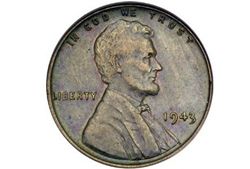
The Second World War meant big rationing on copper, and the US Mint was no exception. Most wartime pennies were instead made of a brass-steel alloy, except for a few struck from the outlawed bronze (a copper alloy). If you find one of these anomalies (the common brass version will stick to a magnet, while the bronze won't) it could be worth big bucks.
Sign up for the Live Science daily newsletter now
Get the world’s most fascinating discoveries delivered straight to your inbox.
